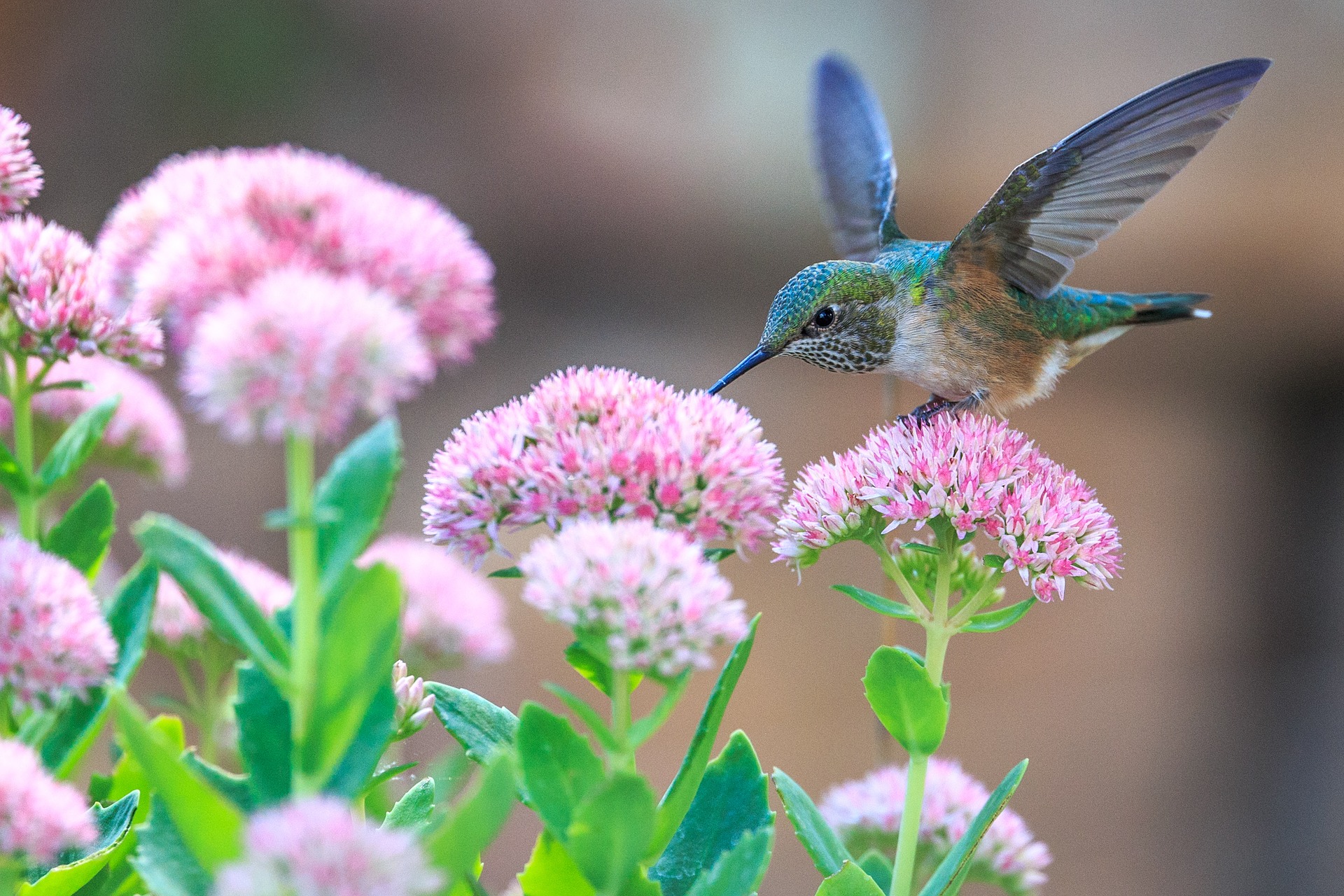When it comes to planning a garden, your personal aesthetic isn’t the only one to consider. Next to providing high-quality food, water, and shelter, the bloom colors you choose will affect which birds frequent your new garden. And if you’re a backyard birdwatcher, this is your opportunity to attract more of your favorite birds to your yard! Here are examples of which colors attract which birds, and what to plant for every hue.
Birds and the Color Red

Considered a “power” color by humans, this bold shade is also popular with birds. In fact, birds use their red markings to warn predators away from nests and to attract mates.
Red attracts hummingbirds, which is why many hummingbird feeders have red bases and/or ports. It’s also a popular choice in hummingbird gardens, though not so much in butterfly gardens (since red isn’t highly visible to pollinators).
Red flowers
- Bee balm
- Columbine
- Coral bell
- Hibiscus
- Lobelia
- Pentas
- Petunia
- Peony
- Zinnia
Birds and the Color Orange

Orioles love to feast on orange slices, which is why oriole feeders often sport an orange hue. These brightly-colored birds are a treat to watch, and if you want to see more of them, include some orange-colored blossoms in your outdoor space. You’re also sure to see more hummingbirds, butterflies, and bumblebees—all of which will be grateful for the nectar these plants are offering.
Orange flowers
- Begonia
- Bird of paradise
- Butterfly weed
- Calendula
- California poppy
- Impatiens
- Lantana
- Lion’s tail
- Mexican sunflower
- Nasturtium
- Pansy
- Trumpet vine
Birds and the Color Yellow
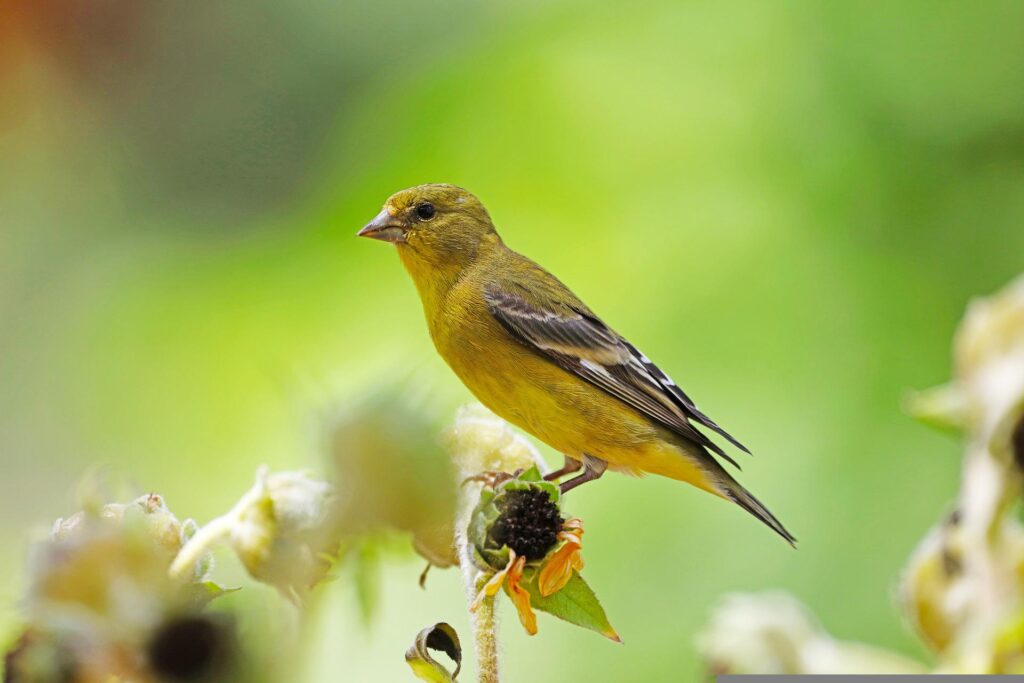
Goldfinches, warblers, cardinals, and hummingbirds love yellow. Some posit that the color is a strong attractor because the bright color is easy to see even in the dark. It’s also a favorite hue for bee and butterfly gardens, as it’s known to attract these pollinators.
Yellow flowers
- Alyssum
- Buttercup
- Clematis
- Cosmos
- Dahlia
- Evening primrose
- Forsythia
- Goldenrod
- Marigold
- Morning glory
- Oxeye
- Sunflower
Birds and the Colors Pink and Purple
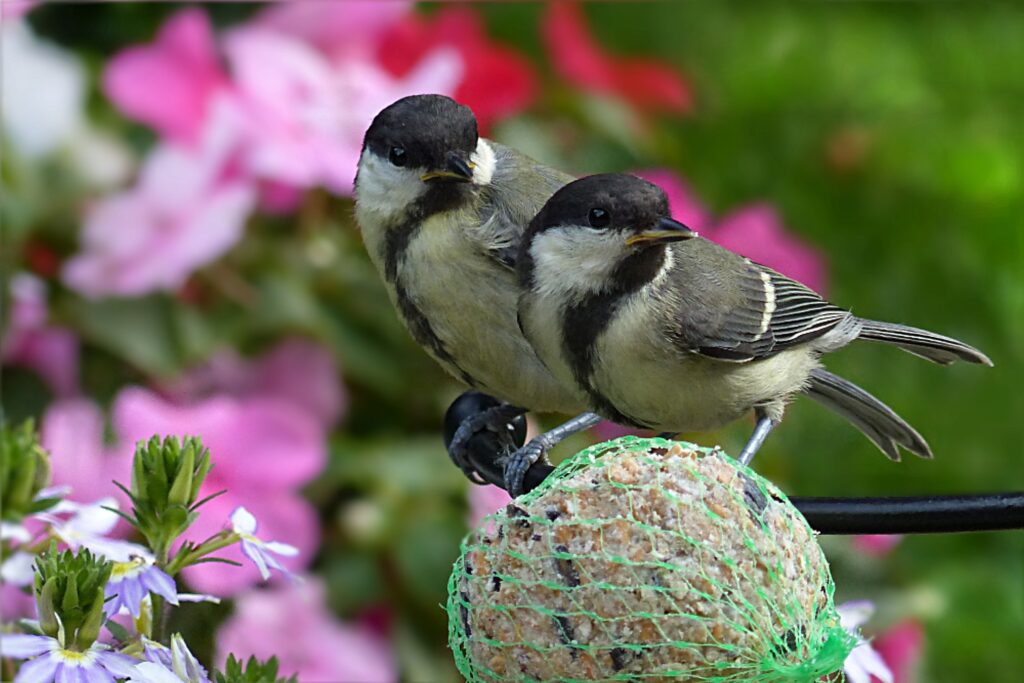
Love this color combo? So do many birds! In fact, pink is another color to include in your hummingbird or butterfly garden, as it attracts most pollinators. And purple coneflowers, especially, have been known to attract a variety of birds, from chickadees and juncos to woodpeckers.
Pink and purple flowers
- African daisy
- Bellflower
- Coneflower
- Crape Myrtle
- Echinacea
- Freesia
- Lavender
- Mexican sage
- Princess flower
- Rock rose
- Showy evening primrose
- Verbena
Birds and the Color Green
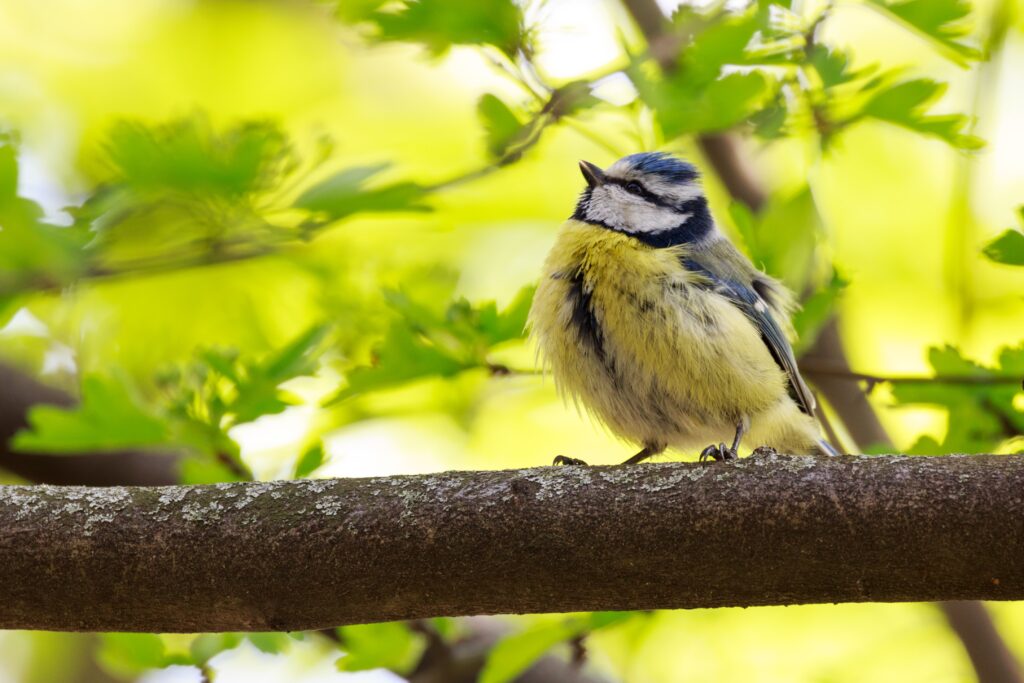
The easiest color to incorporate into your garden is also the one that attracts the most birds. Green plants and flowers attract blackbirds, doves, thrushes, and many other birds species. Considered a “safe” color, green denotes a place to shelter and take cover from predators. The same is true for plants and blooms in silver, gray, and brown tones.
Green flowers
- Agave
- Bells of Ireland
- Cala lily
- Chrysanthemum
- Cockscomb
- Echeveria
- Gerbera daisy
- Hydrangea
- Zinnia
Birds and the Color Blue
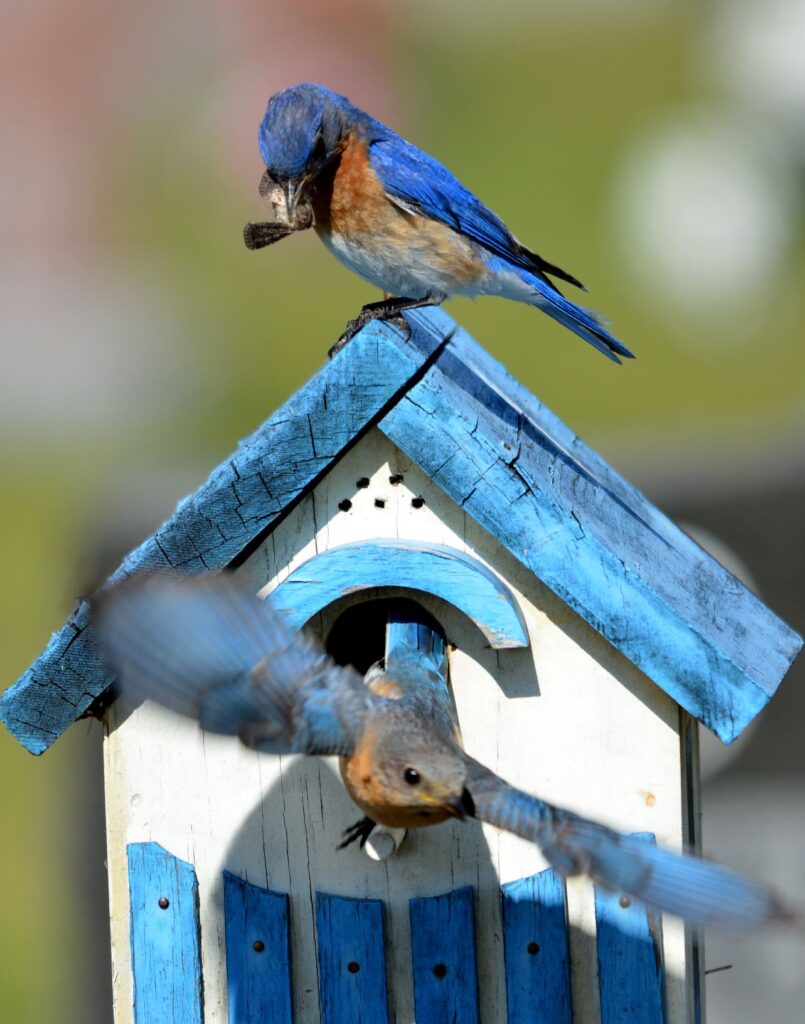
It may come as no surprise that bluebirds and blue jays favor the color blue. Want to see more of these stunners in your yard? Plant some of the blooms below, and have some bird feeders filled with mealworms and high-quality seed waiting for them when they come.
Blue flowers
- Bellflower
- Bluebell
- Blue blossom
- Blue-eyed grass
- Flax flowers
- Hydrangea
- Iris
- Lilac
- Morning glory
- Penstemon
- Sage
- Wisteria
What About White?
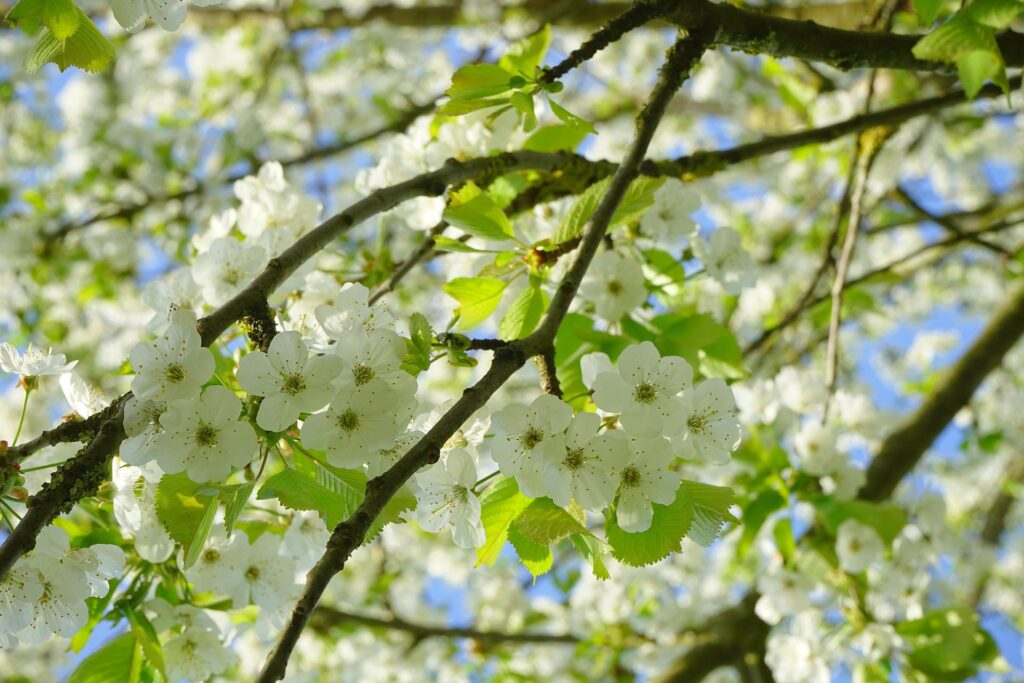
Did you know that white can actually be a deterrent to birds? They associate it with danger and warning. It makes sense—birds, like the Northern Mockingbird and Dark-eyed Junco, flash white markings on their bodies and wings to warn predators and other birds. So, while incorporating white blooms into your garden should have little effect, avoid planting an all-white or -cream garden if your goal is to attract more birds.
Surefire Ways to Attract Birds to Your Yard
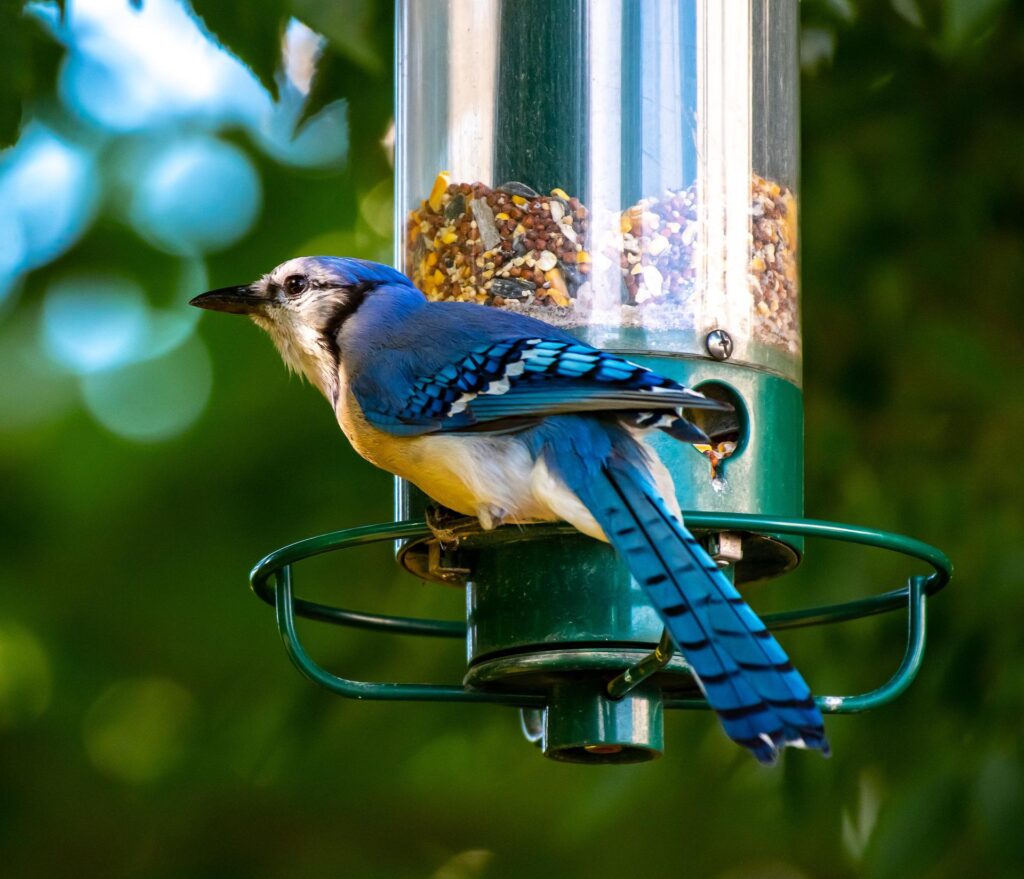
While color does play a part in attracting birds, there are more surefire ways to get them coming—and returning—to your yard. These include:
- Hanging one or more bird feeders
- Filling feeders with high-quality seed or suet
- Offering a clean source of water, like a fountain or birdbath
- Providing native plants, shrubs, and trees for food and shelter
Birdwatch with Us Live or Virtually
Visit us in Chirp’s Backyard for one of our in-person Nature Talks, featuring some of the world’s top naturalists. Learn about the local birds of the Big Bear Valley, including our very own eagle couple Jackie and Shadow, along with other rare birds found here.
Chirp also offers guided Nature Walks around Big Bear Lake—these events are free and fun for the whole family! Not planning on going anywhere? Enjoy all that Chirp has to offer in the comfort of your home—check out our recorded Nature Walks and Talks and how-to videos on Chirp’s YouTube channel.

